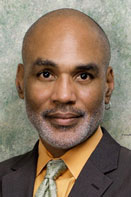

What we need to do after AIDS 2012
By Phill Wilson
All the speeches have been delivered, the presentations finished, the media stories written and filed, the promises made and the delegates have returned home. The 19th International AIDS Conference is officially over.
This conference was the first International AIDS Conference where we knew we could end AIDS. No, we don’t have a cure or vaccine yet. But David only had a slingshot and he fell Goliath. Our tools are far from perfect, but they are good enough to get the job done. If — and this is a big “if” — we do what we need to do.
So what do we need to do to get from where we are today to the end of AIDS? Here is my list of the top five things that need to happen:
1) We must fully implement the Affordable Care Act (ACA).
This most important piece of domestic legislation in the last 40 years will deliver health coverage to more than 30 million people who are currently uninsured. Many of them are Black people living with HIV/AIDS. The ACA has generated a lot of opposition and misinformation. Black folks must be at the forefront of opposing efforts to roll this reform back. We also need to ensure that essential benefits include: •an annual physical for everyone, •an HIV test at every physical (including at least two annually for high-risk individuals), •twice-a-year viral load tests for people living with HIV, and; •comprehensive coverage of ARVs, both for treatment and for prevention.
2) Everyone living with HIV must come out.
Living openly and proudly with HIV confronts HIV stigma, proves that it’s possible to live a full and healthy life with HIV and helps build demand for essential services. It also saves our own lives and others’. I’m alive today because I have the love and support of family and friends.
We want our families to love us, but they can’t love us, they can’t support us, unless they know us. And they can’t know us if we continue to hide from them. They need to know us. They deserve to know us—not just some one dimensional avatar of us, but all of us. I know there is still stigma, discrimination, and sometimes risk of bodily harm that prevents some of us from coming out today. But some of us can, and if we do, others will be able to join us later.
3) Treatment on demand must be available to everyone.
We need to demand that anyone who wants treatment should be able to get it. Through a combination of programs, such as Medicaid and the Ryan White CARE Act, we’ve built a robust system of care for people living with HIV. Yet only about one in four people with HIV in this country are now receiving the care they need. Too many people are intimidated by the medical system. If we demand a better system, they will have to build it.
4) Biomedical and behavioral prevention and treatment efforts must be integrated.
Some of us continue to resist the so-called “medicalization” of AIDS, while others promote the new biomedical tools—treatment as prevention, PrEP and others still to be developed—as a panacea. Neither perspective is correct. These new biomedical strategies are more powerful than anything we’ve ever had in our AIDS toolkit. But to work they will need to connect with actual people—those who deliver them and those who use them.
We should not think of our approach as an “either or” strategy but a “both and” strategy. The biomedical model only works when education, counseling, behavior change, adherence and support are available. But while education and social and behavioral interventions are absolutely necessary, they are absolutely not sufficient. If they were the epidemic would already be over. The addition of biomedical interventions can lead us to the promise of ending AIDS.
5) AIDS organizations need to retool themselves for a rapidly evolving AIDS landscape.
Communities will always remain central to our ability to end AIDS, but most of our community-based organizations have focused their expertise on behavioral interventions only. Too few have meaningful scientific expertise, and fewer still actually deliver health care services.
With biomedical tools rapidly becoming critical to our AIDS response—and with the Affordable Care Act poised to dramatically alter the terrain for health and social services—many AIDS organizations risk becoming irrelevant. Fortunately, some visionary organizations have already begun to retool. Think: Harlem United, which now connects the dots between medical care and social services; Community Education Group, which has a testing program with a 95 percent linkage-to-care rate; and Bienestar, a unique peer-based social service organization serving the Latino community in Southern California. They have become examples of what effective AIDS-service organizations will need to look like. More organizations in our communities need to follow these examples.
The train to ending the AIDS epidemic has left the station. Almost everyone else is onboard but we’re still standing on the platform. It’s not gotten completely up to speed and there is still room for us to get onboard. Too often we have been left behind. It doesn’t have to be that way this time, but we better start running.
We know what to do. For the most part, we know how to do it. We know who we need to do it for. It’s time to get it done.
Yours in the struggle,
Phill


Be the first to comment